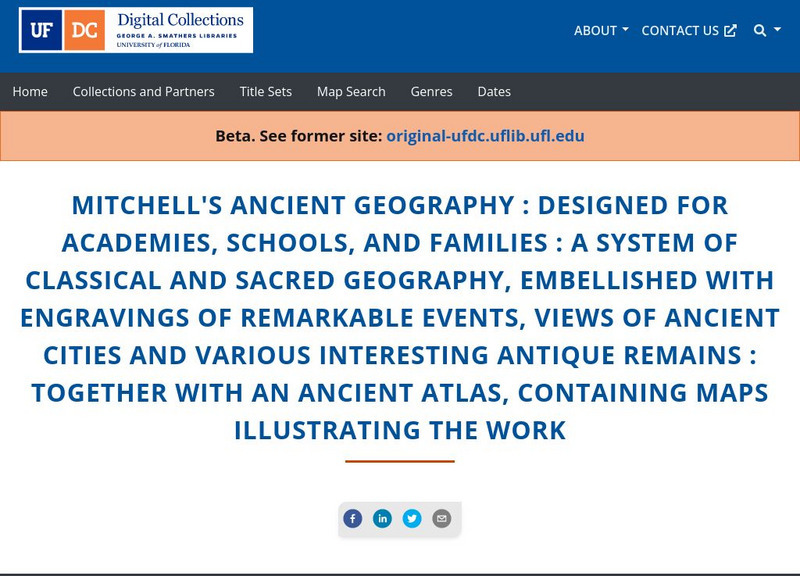Curated OER
The Making of a Coat
Students read the story A New Coat For Anna and discuss their knowledge on how to make a coat. In this reading and coat making lesson plan, students discuss coat making and listen to a speaker that spins thread to make coats.
Curated OER
The Impact of Islamic Culture on the Arts of the Renaissance
Eighth graders examine the linguistic and cultural impact of the Arabic language and Islamic culture on the Spanish language. They analyze and label maps, listen to and differentiate between Spanish and Arabic music, and compare and...
Curated OER
Who Speaks Modern English and Where ?
High schoolers predict the widespread effects of the English language and consult on-line charts and text to verify their findings.
Curated OER
Nature and Haiku Poetry
Students compose haiku poems and recognize how cultures value nature and
natural forces through the study of Japanese poetry. This lesson includes a bibliography of resources.
Curated OER
Forest Management
Students analyze physical and biological changes in the Sequoia forest ecosystem, especially logging and fire management practices. They evaluate the controversy of how logging and fire management should be conducted in the Giant Sequoia...
Curated OER
The Perils of Translation
Students discover the challenges of translating poetry written in a character-based language through the study of Lao-tzu's work, Daodejing. This instructional activity includes possible extensions and evaluations.
Curated OER
Dragons Of China And Japan
Students create drawings of dragons that could be found in the art of Japan or China. The lesson plan involves two-days of instruction and leads to student examples of dragons four-times larger than the originals.
Curated OER
Introduction to Greek Theater and Antigone
Students produce a bulleted list of five facts about Greek Theater, complete the comparison graphic of Greek Theater Web sites, and create a bulleted list of four major themes.
Curated OER
Dragons In Chinese Folktales And Art
Students investigate and discuss the use of the dragon in Chinese folktales and art in this middle school lesson introducing Chinese art and culture. Lesson extensions are included for additional activities.
Curated OER
Introduction to African Folklore
Pupils are read "Anansi the Spider" to begin their discussion on continents. Using a map, they locate the continent of Africa and the country of Ghana. They discover who the Ashanti people are and view examples of their artwork. They...
Curated OER
The Rulers of Sky And Earth
Students investigate how symbols of power, the dragon and the tiger, are portrayed in the art of China and Japan and compare and contrast this with the Western conception and portrayal of the dragon.
Curated OER
Voices From Your Heart
Young scholars create individual representations of Chinese calligraphy symbols in this cross-curricular lesson for the elementary Language Arts or Art classroom. One enrichment activity is included.
Curated OER
Legends of the Navajo People
Second graders are read a story in which they begin to examine Native American legends. Using different legends, they discuss how they affected the future people of native peoples. They write a short story on the information they gathered.
Curated OER
Discovering American Identity through Writings and Paintings, 1800-1845
Tenth graders view paintings to determine the identity of the United States in a specific time period. As a class, they listen to their teacher give the title of the painting and they write a prediction about what the painting might be....
Curated OER
Islamic Roots of Judaeo-Christian Culture
Learners discuss the stereotypes associated with the major religions of the world. Using primary sources, they summarize the information and role play various roles to the class. They participate in a debate between the different points...
Internet History Sourcebooks Project
Fordham University: Ancient History Sourcebook: Marcus Aurelius Meditations
Ancient History Sourcebook offers the Meditations of Marcus Aurelius Antonius, the "philosopher emperor" of Rome. This is one of the few pieces of literature written by a world leader; even more striking is the fact that it is a work of...
Other
China Vista: Ancient Chinese Fables
Fables have enriched the Chinese language and the morals of these tales have found their way into the Chinese language. Six popular ancient Chinese fables are found here in Chinese and English.
University of Florida
Baldwin Library: Mitchell's Ancient Geography
A scanned copy of the 1850 publication of Mitchell's Ancient Geography by Samuel Augustus Mitchell, a nonfiction book for children.
Other
Selfknowledge: The Rime of the Ancient Mariner
This site from SelfKnowlege.com provides the text of "The Rime of the Ancient Mariner" by Coleridge, with notes. It also has several links to information on Coleridge.
Exploring Ancient World Cultures
Exploring Ancient World Cultures: Ancient World Cultures
The University of Evansville provides this site that gives an overview and then additional pages with readings in ancient Greek philosophy and literature. A good general resource.
The History Cat
The History Cat: Ancient Mesopotamia: Epic of Gilgamesh
Tells the story of the Epic of Gilgamesh which is an epic poem from Ancient Mesopotamia and is seen as a great work of literature.
Internet History Sourcebooks Project
Fordham University: Ancient History Sourcebook: Augustan Encomius
Here at this site from Ancient History Sourcebook at Fordham University is an English version of ancient Roman poet Horace's poem, "The Secular Hymn."
Friesian School
Friesan School: The Pronunciation of Ancient Egyptian
This is a very concise and in-depth site about the hieroglyphics of Ancient Egypt. The site provides background information about the formation of the Egyptian language as well as information about the actual images and sounds of the...
Steven Kreis, PhD
The History Guide: Homer and the Greek Renaissance
Presents a clear, readable summary of ancient Greek history from the Archaic period through the Renaissance which included Homer's epic poems. Explains major historical events and cultural trends as background for those reading Homeric...






















